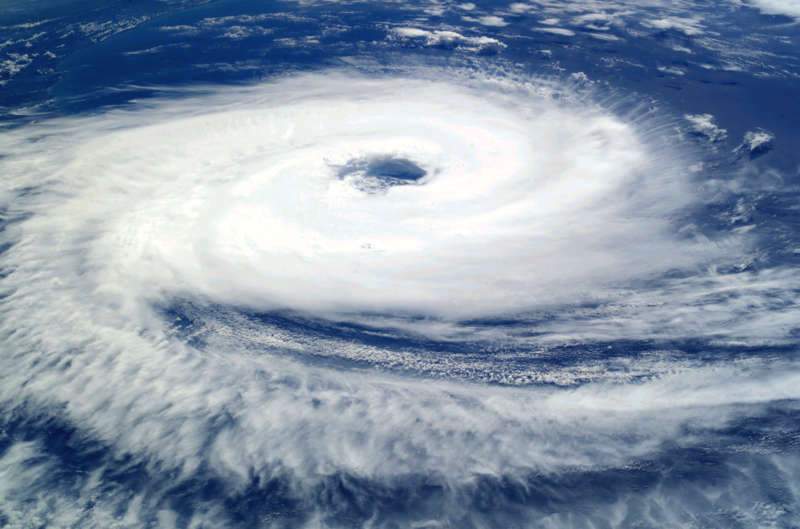

Image for representation
The North Indian Ocean is the hotbed of favorable conditions for the formation of tropical cyclones, with water temperatures of above 27 degrees centigrade, presence of Coriolis forces due to earth’s rotation and varying vertical wind speeds. Such tropical cyclones occur in the Bay of Bengal as well, many of them directed towards the Visakhapatnam coast.
And for the uninitiated, Tsunamis aren’t cyclones. They are caused by movements of tectonic plates under the sea, unlike cyclones which are phenomena of evaporation and the forces due to rotation of the earth.
26 of the 35 deadliest tropical cyclones in world history have been Bay of Bengal storms, according to Jeff Masters, a meteorologist.
Most of the tropical cyclones near Visakhapatnam form during monsoon and retreating monsoon seasons.
| Month | Number of Cyclones |
| January | 2 |
| February | 0 |
| March | 1 |
| April | 3 |
| May | 19 |
| June | 30 |
| July | 19 |
| August | 24 |
| September | 21 |
| October | 41 |
| December | 17 |
The shape of the landmass of our eastern coast and the flat coastal plains make the coasts of AP and Odisha very susceptible to cyclone crossings.
Let’s take a look at the history of cyclones in Visakhapatnam.
In the 19th century, three Very Severe cyclones struck Vizag, out of which the deadliest cyclone was in 1839. It caused over 300,000 fatalities and destroyed 20,000 ships.
In the 20th century, nine other cyclones of varying magnitudes hit the coast of Vizag till 1977.
In 1977, the severe cyclonic storm which hit Diviseema caused a major overhaul in the disaster management machinery of the state.
Nine other Very Severe to Super cyclones affected Vizag. In 1999, a very severe cyclonic storm and a super cyclone impacted Visakhapatnam. The first one only skirted the coast, moving northwards while the latter crossed the coast at Gopalpur on the AP-Odisha border. This was the most intense tropical cyclone ever to make landfall in the state of Odisha.
The problem, even though there are warning centers
in place, is the cyclone’s rapid intensification, which was evident in Phailin, a very severe cyclonic storm that crossed the coast again at Gopalpur in 2013.In 2014, occurred Hudhud, a very severe cyclonic storm that crossed the coast near Visakhapatnam, laying the city bare. The wounds from this cyclone are still fresh in our minds.
After a few other cyclones in and around Visakhapatnam, in 2018, Titli occurred. This is the beginning of a continuous three-year period of above-average cyclonic activity.
In 2019, Fani, a rare summer cyclone, though extremely severe, made landfall at Puri on May 3 as a Category 5 equivalent tropical cyclone. It is unofficially the strongest cyclone ever recorded in the North Indian Ocean based on windspeed. It also became the strongest tropical cyclone to make landfall in the state of Odisha after the 1999 Odisha Cyclone and Cyclone Phailin.
The most recent one of all, Cyclone Gulab hit Andhra Pradesh close to Kalingapatnam on September 26, becoming the first cyclone to form in the Bay of Bengal in the month of September since Cyclone Daye in 2018. Seventeen people were killed due to the storm in various places of Central India, including one in Visakhapatnam. Its remnants affected Maharashtra and Gujarat, later on becoming Cyclone Shaheen by reaching the Arabian Sea on September 30.
An intergovernmental panel on climate change in its 2013 report said the occurrences of these cyclones near Visakhapatnam may decrease but the intensity of the cyclones will rise.
Cyclones are named from a list of names suggested by members of regional panels of countries.
Sitcoms, or situational comedies, have captured audiences around the globe with their engaging storylines and…
When the chaos of city life begins to overwhelm, it's time to get away to…
Starting this July, parts of Visakhapatnam and Vijayawada will be designated as Clean Air Zones…
The Vizag Metro project is finally witnessing significant progress on the ground. A delegation from…
Education Minister Nara Lokesh has invited all political parties to the upcoming Yogandhra event in…
Pendurthi Circle Inspector K V Satish Kumar confirmed that a case has been filed against…
Leave a Comment